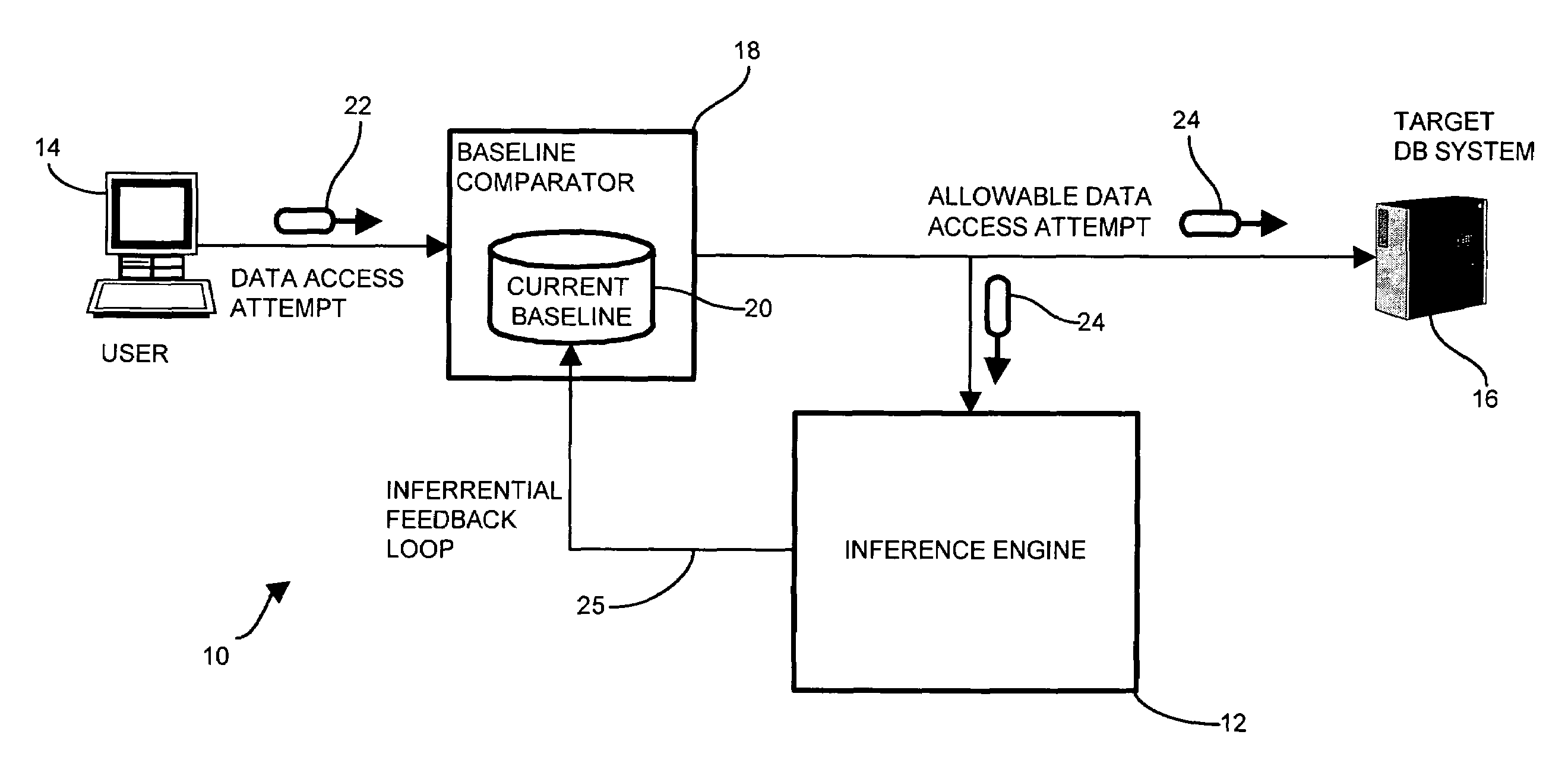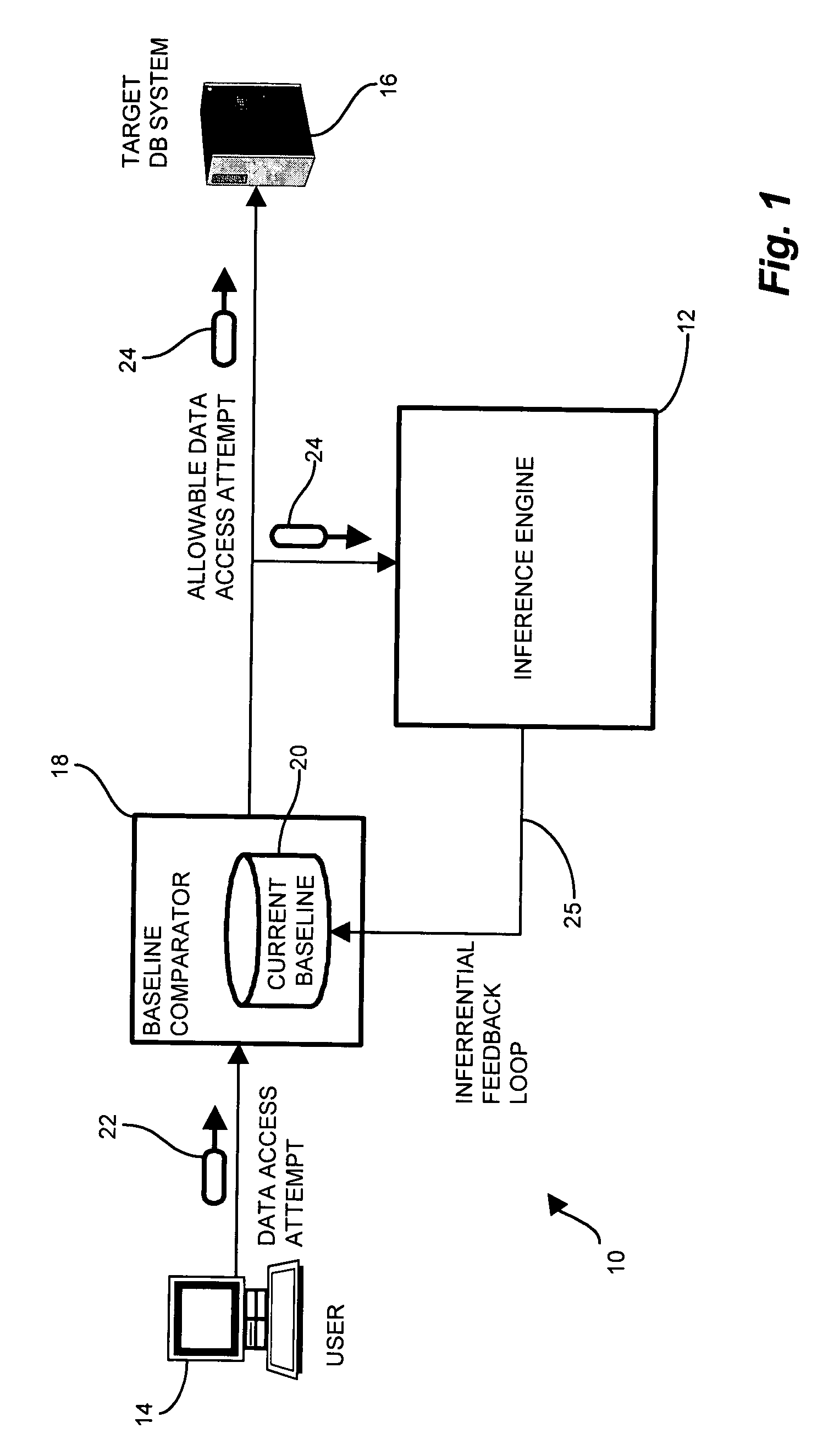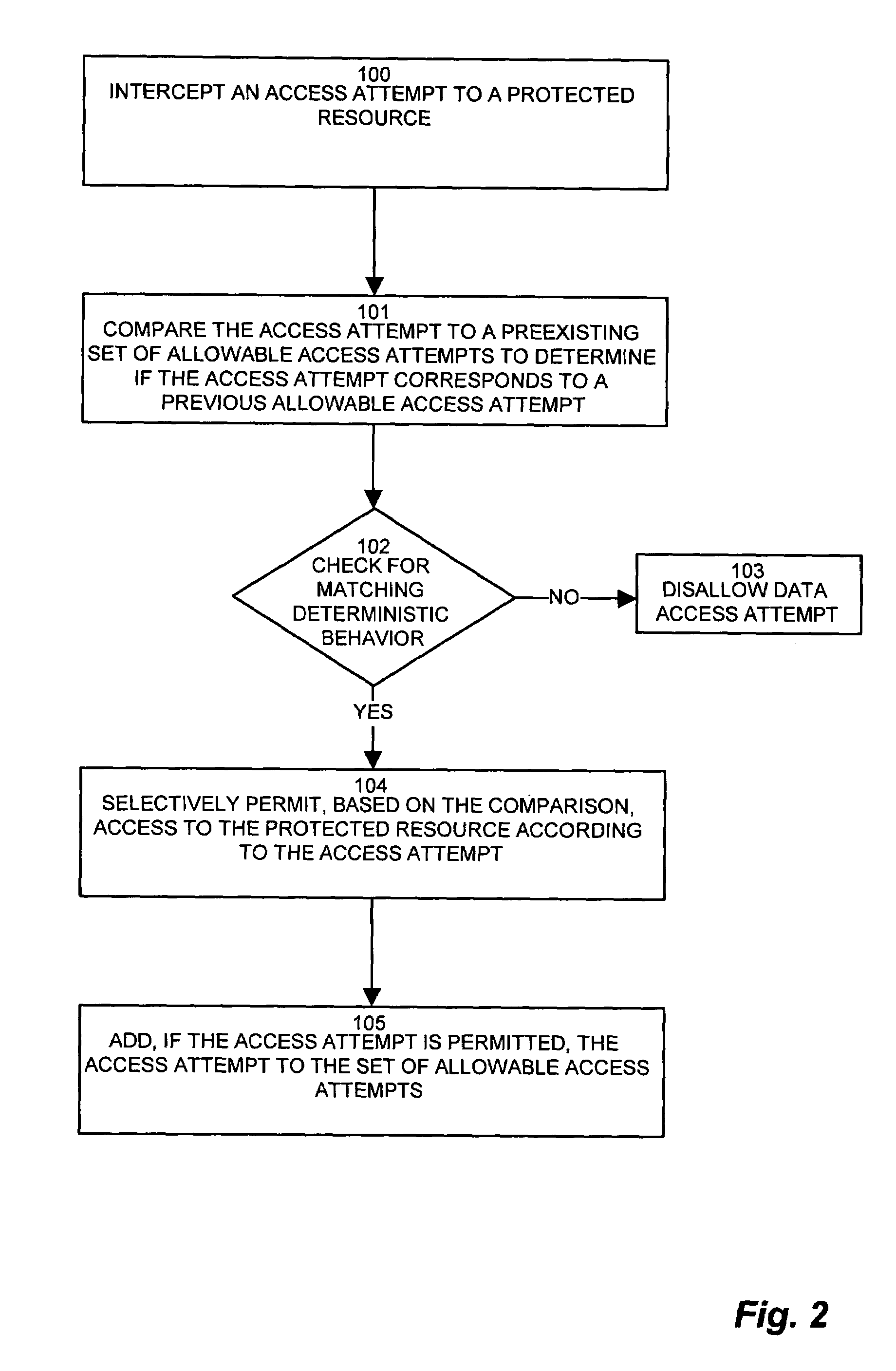System and methods for adaptive behavior based access control
a behavior-based access control and adaptive technology, applied in the field of adaptive behavior-based access control, can solve the problems of affecting throughput performance, affecting the degree of error, blocking acceptable transmission, etc., and achieve the effect of reliable indicator of permissive behavior and fast computation and comparison
- Summary
- Abstract
- Description
- Claims
- Application Information
AI Technical Summary
Benefits of technology
Problems solved by technology
Method used
Image
Examples
Embodiment Construction
[0036]Embodiments of the invention are based, in part, on the observation that typical conventional software applications tend to exhibit deterministic and highly-repetitive behavior when accessing a protected resource such as a database. Such deterministic and repeating behavior is typically exhibited as a set of tables accessed together, a sequence of fetches or updates, or a series of complementary operations, such as fields which are accessed or modified together. Further, such deterministic behavior typically exhibits characteristics with respect to the source and time of the access attempts. For example, certain updates may emanate from a particular username or network address. Similarly, as in the payroll example above, such operations may occur during a particular time interval. Once the security filter learns the deterministic behavior indicative of allowable access attempts, successive access attempts may be scrutinized according to the acceptable deterministic behavior.
[0...
PUM
 Login to View More
Login to View More Abstract
Description
Claims
Application Information
 Login to View More
Login to View More - R&D
- Intellectual Property
- Life Sciences
- Materials
- Tech Scout
- Unparalleled Data Quality
- Higher Quality Content
- 60% Fewer Hallucinations
Browse by: Latest US Patents, China's latest patents, Technical Efficacy Thesaurus, Application Domain, Technology Topic, Popular Technical Reports.
© 2025 PatSnap. All rights reserved.Legal|Privacy policy|Modern Slavery Act Transparency Statement|Sitemap|About US| Contact US: help@patsnap.com



